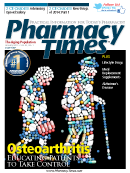
Publication
Article
Pharmacy Times
Old Drug, New Tricks: How EHR Data Can Help Find Hidden Therapeutic Benefits
Author(s):
Hidden therapeutic benefits for existing medications come with a caveat: adding new therapeutic indications requires evidence of efficacy, which can be time-consuming to establish and evaluate.
Researchers from Vanderbilt University Medical Center may have found a solution that uses existing data found in electronic health records (EHRs). Their study, published in the Journal of the American Medical Informatics Association, uses an automated analysis of EHR data to validate factors that could indicate new drug indications.
“What we do is basically [use] the work that’s a by-product of health care for another use,” said Dr. Josh Denny, MD, MS, associate professor of Biomedical Informatics and Medicine at Vanderbilt University, in an exclusive interview with Pharmacy Times. “It’s just the stuff that they’re doing anyway through the routine reports that they’re writing, through the labs that they’re ordering. It doesn’t require any extra work.”
EHR data offer 2 distinct advantages compared with traditional clinical trials used to establish hidden therapeutic benefits. Analyzing existing data costs much less than running a clinical trial. There are often more hypotheses about therapies and patient outcomes than a clinical trial can effectively evaluate, Dr. Denny said.
Furthermore, data mining the information in an EHR is considerably quicker than conducting a clinical trial. The method can be particularly advantageous in cases in which a hypothesis is too risky to warrant a full clinical trial or when trial recruitment presents a challenge.
“The data’s already there, waiting to be mined,” Dr. Denny said. “You just have to decide how you want to mine it, and what you want your study to be about. It’s definitely faster, cheaper, and allows for analysis of more kinds of ideas that may be considered too risky to consider for a clinical trial at this point.”
Dr. Denny and his colleagues at Columbia University and at the Mayo Clinic focused on the use of metformin in treating certain cancers. Researchers had full access to medical record data at Vanderbilt University Medical Center and at the Mayo Clinic, which allowed them to assess the impact of various factors on the study cohort.

Their algorithms focused on 5-year survival with and without metformin exposure, and involved analyzing health records from 32,000 cancer patients treated at Vanderbilt University Medical Center since 1990.
“What I would say differentiates this study…is really using the entire medical record the doctors write,” Dr. Denny said. “It used the text the doctors write, the laboratory data, the billing codes, the timing, registry information from the tumor registry. All that stuff comes into play.”
They then repeated the analysis with a similar set of patient records from the Mayo Clinic, for a total of about 100,000 patient records. A clinical trial using the same amount of participants would be incredibly expensive to perform, Dr. Denny noted.
“What these kind of things help you do is really focus design, and think about where your randomized controlled trial really should be done,” Dr. Denny said. “It can help you reject a lot of hypotheses too.”
Future data could be used to find adverse events associated with existing drugs, as well as influence drug development, Dr. Denny noted. The EHR selection is not as random as a clinical trial, which could introduce study confounders, he added.
Researchers are currently investigating EHR data to find more common medications that might have cancer-related benefits. The medications include statins, angiotensin- converting enzyme inhibitors, angiotensin-receptor blockers, and beta blockers, Dr. Denny said.
“We can use EHR data to help refine health care in a way that is really cheap,” Dr. Denny said. “The data’s already there.”

2 Commerce Drive
Cranbury, NJ 08512
All rights reserved.





